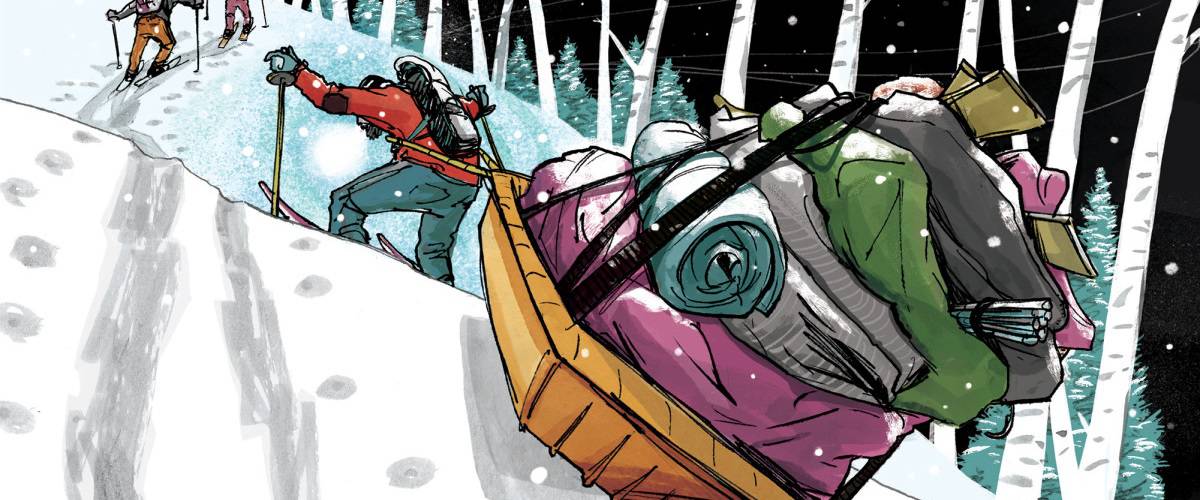Sometimes, when surviving in the winter wilderness, you’ll need more than what a backpack can provide. But how do you travel with more than you can lug on your back? Some will suggest pulling a sled along. But William M. Rochfort, Jr. gave it a shot, and he wouldn’t do it again.
Rochfort wrote about his experience, where he was forced to relocate a backcountry ski trip by foot, with Backpacker. He begins by musing on the discouraging nature of vomiting in the snowy darkness. Rochfort had to make his way to the 10th Mountain Division’s Skinner Hut in the Sawatch Range, a firm 10.6 miles away.
To ease his and his group’s travels, he decided to connect a five-foot plastic sled to a chest harness and haul it along. The sled carried a variety of provisions, which would allow for a greater kitchen experience for base camp.
Rochfort had done this before. But before, it was always snow-covered roads or wide trails with mellow grades. Now it was a steep skin track. It only took a few minutes before the sled grew extremely resistant to movement.
He had made it around 7.5 miles before reaching the Continental Divide. He wasn’t too worried about the upward hills; it was the downward slopes that caused trouble. In order to maintain control of his load, he had to side-hill. That’s when things when the worst. Frequently the load would capsize and cause him to collapse at the sudden tugs. Regularly flipping the load back over, readjusting, and recovery cut a huge hole in their progress.
They took too long and sundown had occurred. With both altitude and exhaustion taking place, that’s when the night-vomiting occurred.
Thankfully, with enough time and effort, they made it to their destination safely.
Conclusion
If you need to travel with a large load, perhaps pulling a sled is not the best option. It required a topographical knowledge that even an experienced local didn’t have. If you still intend on trying, however, Rochfort has a few tips for you.
- Invest in a high-quality sled. Something in the $300 range. He suggests the SkiPulk’s Snowclipper Pulk, but we at Prepslife cannot confirm or deny it’s quality.
- Use a chest harness. They are a bit more expensive, but leagues more effective than pulling the load by your belt.
- Know the trail you’re taking. Aim for snow-covered roads if you can help it. They’re wide, flat and gentle.
- Pack the heavy items low and in the center. Keep the hight as low as possible overall. This will reduce tipping.
- bring large sacks or bags to secure small items.
Sled pulling can be an effective way to travel with a lot of stuff. But if you’re not prepared, it can be a horrible time. Be careful, preppers.
Image by Brett Affrunti – Backpaker.com

